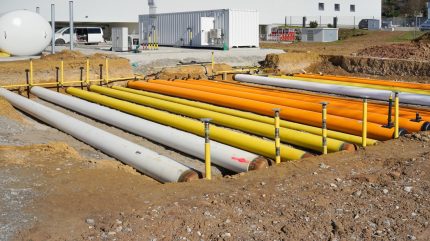
De Nora Italy Hydrogen Technologies (DNHIT), a subsidiary of Industrie De Nora, has commenced construction on its gigafactory in Italy.
The facility is poised to become Italy’s largest electrolyser production hub, with an expected capacity of 2GW equivalent by 2030.
A ground-breaking ceremony, attended by management from De Nora and Snam, as well as national, regional, and local authorities, marked the start of the project.
Construction work is expected to be concluded between late 2025 and early 2026.
The project is part of a larger multiyear expansion plan for De Nora Group’s production capacity.
Located in Cernusco sul Naviglio, the new production centre will cover an area of approximately 25,000m².

US Tariffs are shifting - will you react or anticipate?
Don’t let policy changes catch you off guard. Stay proactive with real-time data and expert analysis.
By GlobalDataIt is designed to be a central hub for electrolysers used in green hydrogen generation, as well as systems and components for water electrolysis and fuel cells.
Additionally, it will support other divisions within De Nora.
In July 2023, DNHIT, in partnership with the domestic Ministry of Enterprise and Made in Italy, obtained roughly €32m ($34.62m) through a concession decree.
The gigafactory will embody a modern concept of industrial architecture, emphasising low environmental impact.
It is intended to achieve the sustainability goals part of the European Green Deal.
Industrie De Nora CEO Paolo Dellachà said: “We proudly announce the start of the construction works of the gigafactory, an ambitious and unique project in terms of production capacity and size, which confirms De Nora’s centrality on the European scene as a facilitator of the energy transition process.
“It will be an architecturally sustainable project, perfectly integrated into the territory where it rises. It will benefit the community, but above all, it will be the fulcrum of a production of technologies for green hydrogen that will have a positive impact on the international decarbonisation process.”
The latest initiative is expected to contribute to the local economy, potentially creating 200 direct jobs.
Moreover, it is anticipated to generate approximately 2,000 induced employment opportunities.



